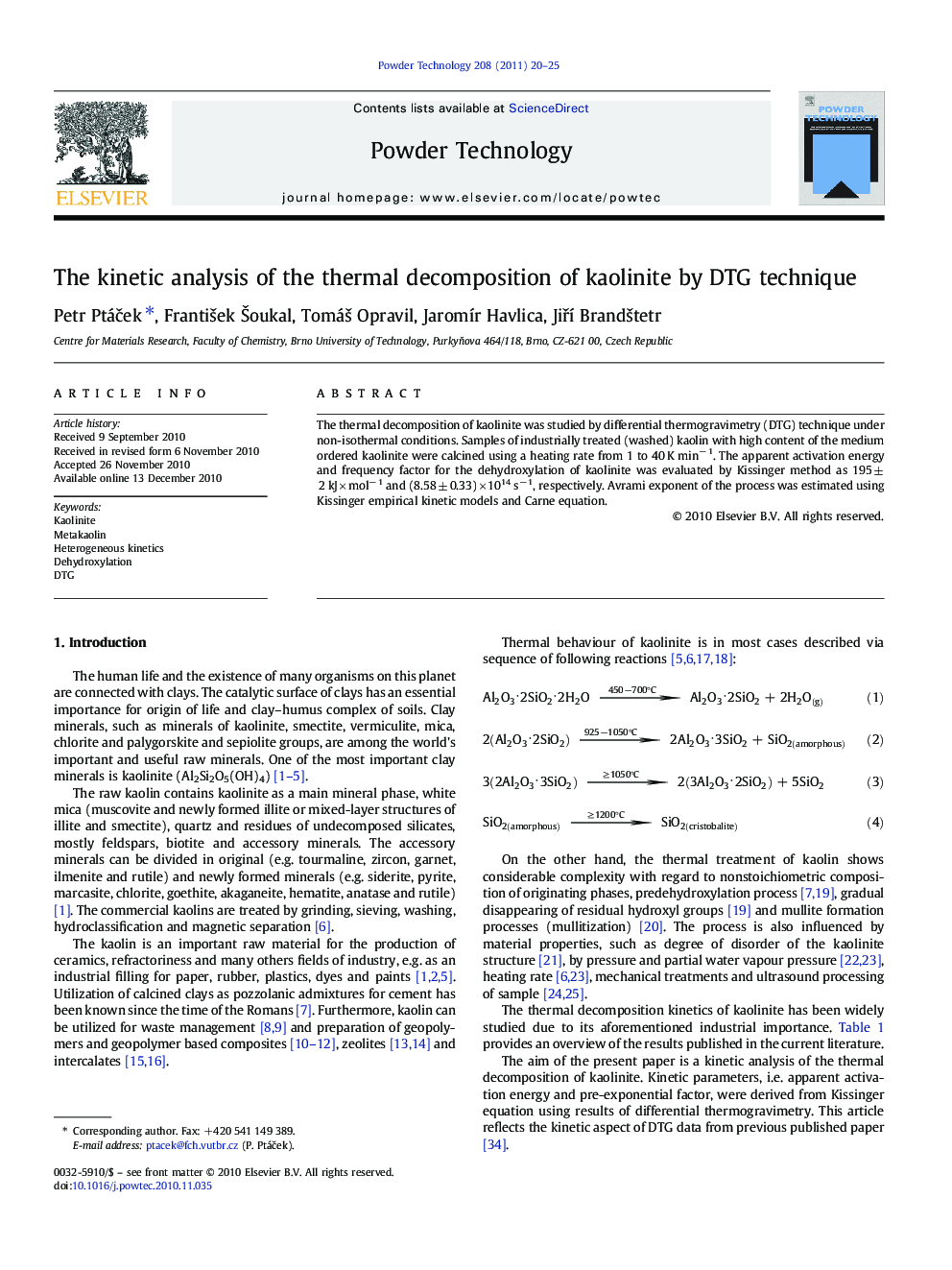| Article ID | Journal | Published Year | Pages | File Type |
|---|---|---|---|---|
| 237921 | Powder Technology | 2011 | 6 Pages |
The thermal decomposition of kaolinite was studied by differential thermogravimetry (DTG) technique under non-isothermal conditions. Samples of industrially treated (washed) kaolin with high content of the medium ordered kaolinite were calcined using a heating rate from 1 to 40 K min− 1. The apparent activation energy and frequency factor for the dehydroxylation of kaolinite was evaluated by Kissinger method as 195 ± 2 kJ × mol− 1 and (8.58 ± 0.33) × 1014 s− 1, respectively. Avrami exponent of the process was estimated using Kissinger empirical kinetic models and Carne equation.
Graphical AbstractThe thermal decomposition of kaolinite was studied by DTG technique under non-isothermal conditions using heating rate from 1 to 40 K min− 1. The apparent activation energy and pre-exponential factor of process are 195 kJ × mol− 1 and 8.58 × 1014 s− 1, respectively. The value of Avrami exponent was estimated using Kissinger empirical kinetic models and Carne equation.Figure optionsDownload full-size imageDownload as PowerPoint slideResearch Highlights► The dehydroxylation of kaolinite was studied by DTG under non-isothermal conditions. ► Avrami exponent was estimated using Kissinger kinetic models and Carne equation. ► The apparent activation energy was evaluated by Kissinger method as 195 ± 2 kJ × mol− 1. ► Apparent kinetic exponent corresponds to the diffusion controlled growth.
